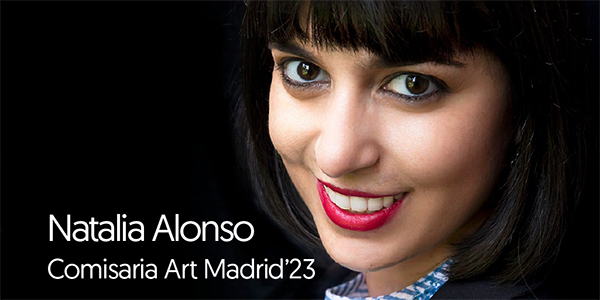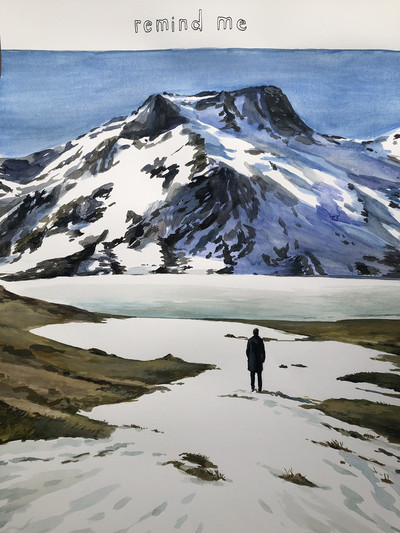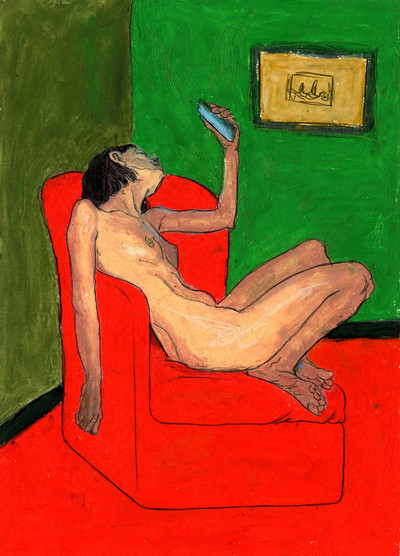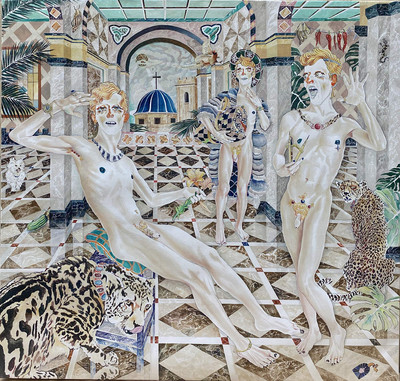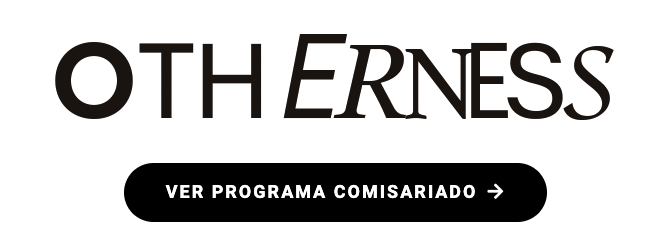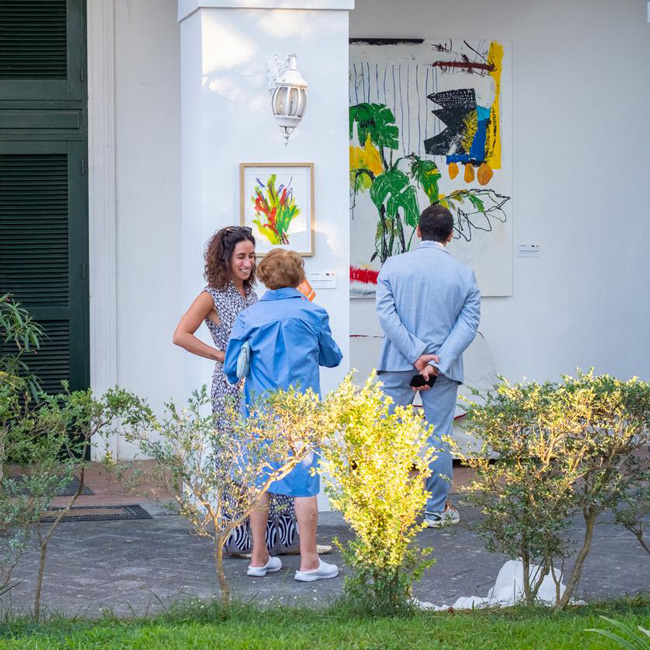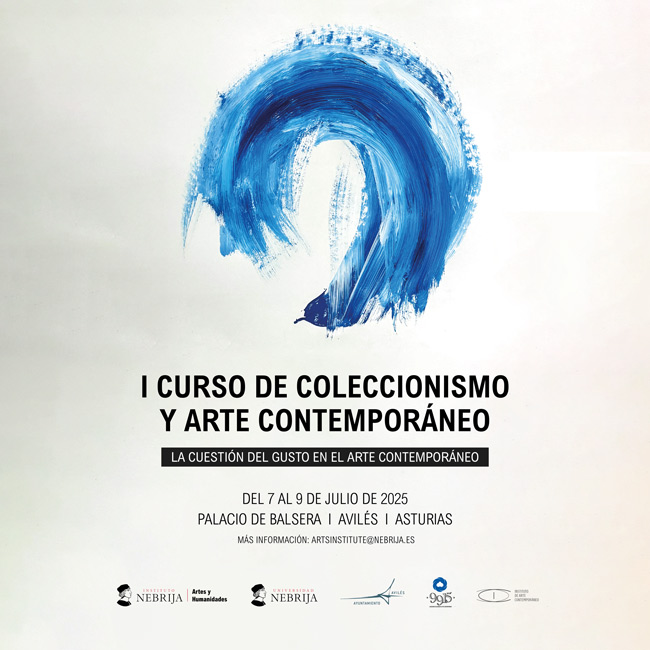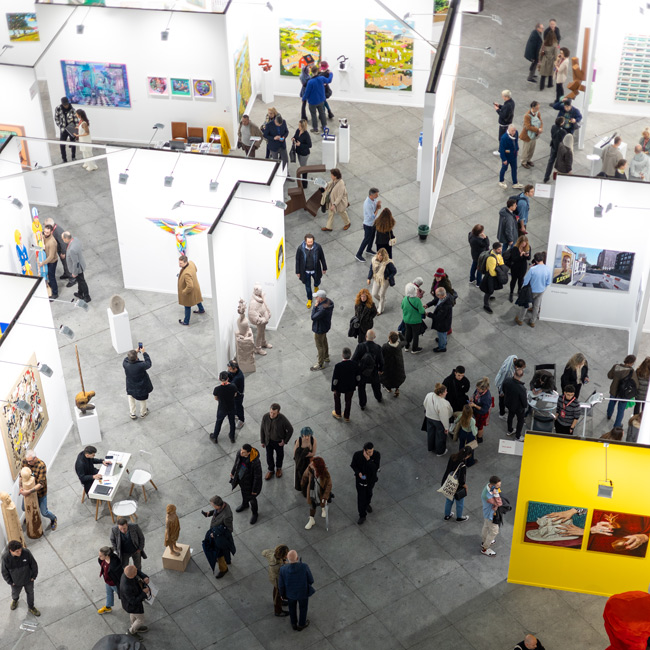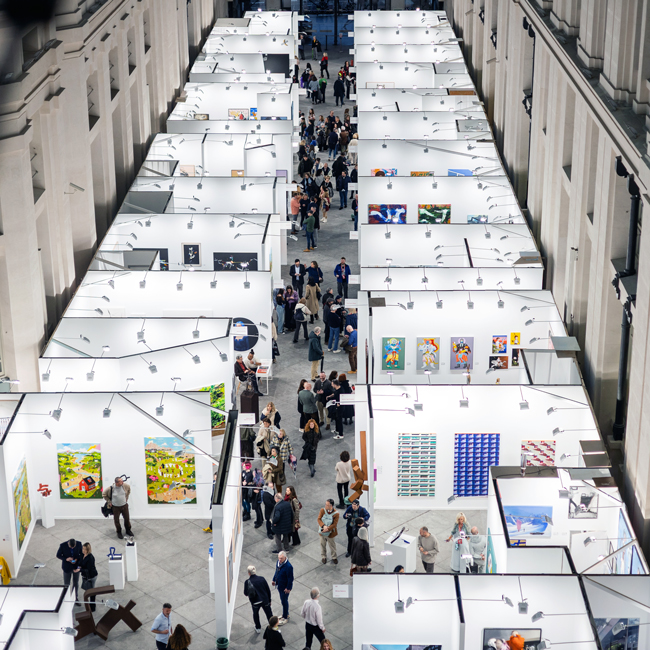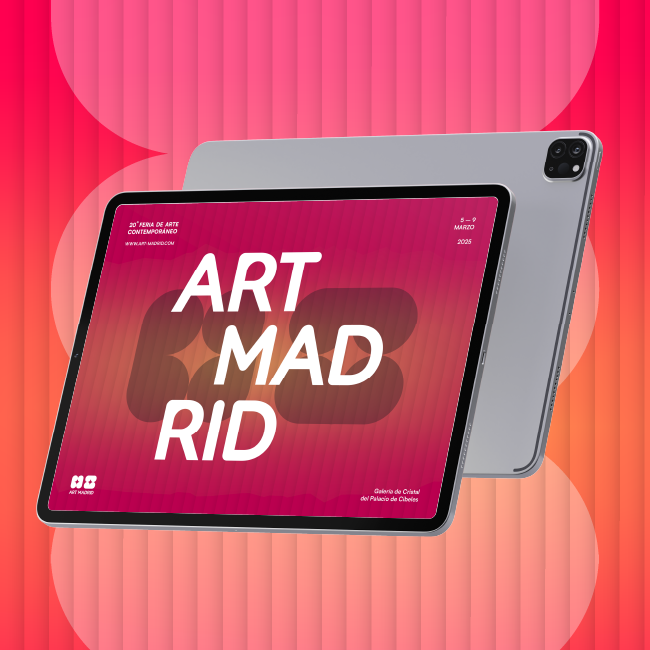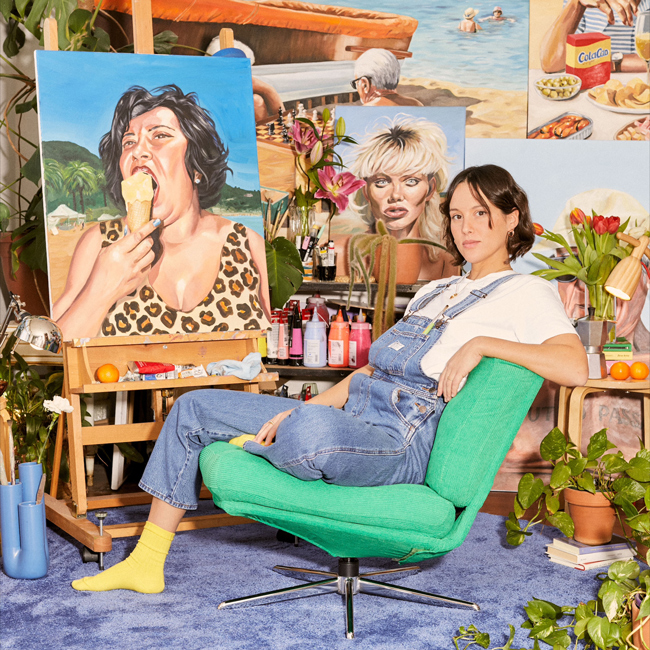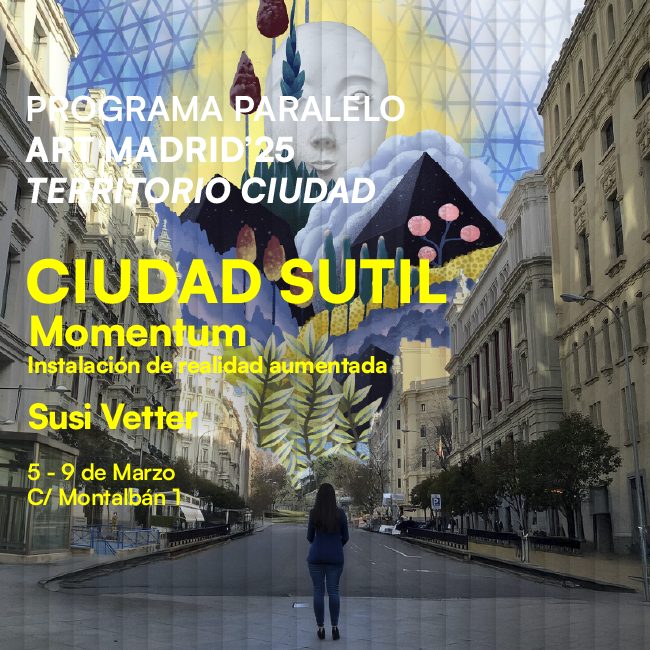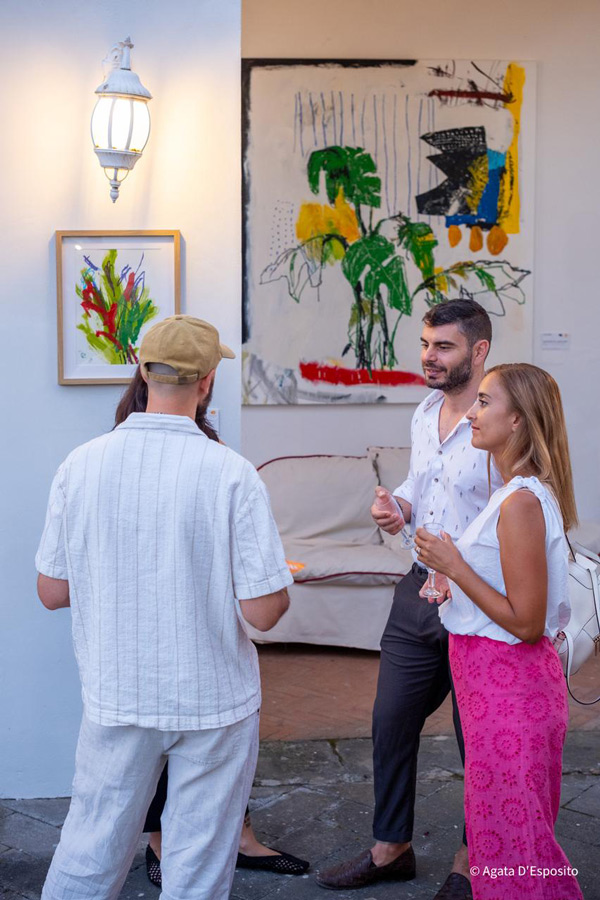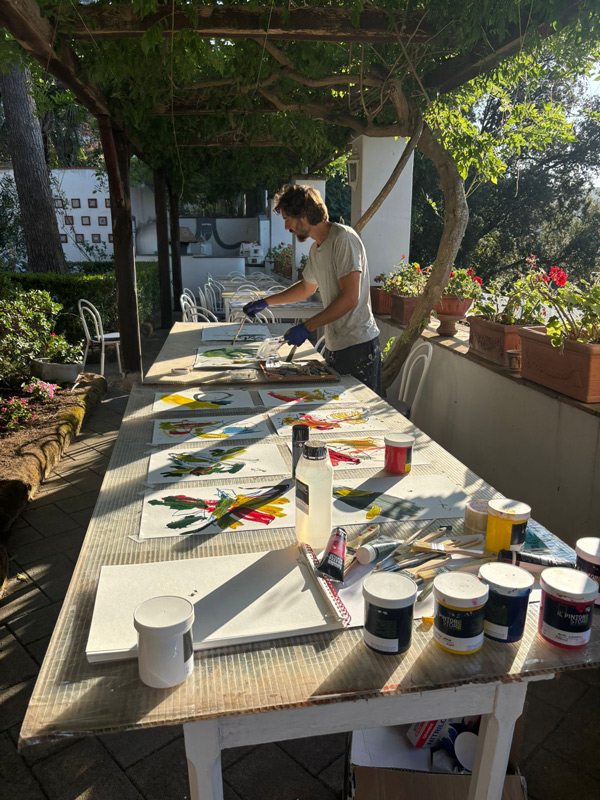OTHERNESS: A Guided Tour curated by Natalia Alonso Arduengo
Feb 8, 2023
art madrid
Natalia Alonso Arduengo will be the curator in charge of organizing the Curatorial Program, focusing on the subject of IDENTITY, taking as a starting point the verses of Otherness, a poem by Mario Benedetti. As part of the Art Madrid'23 program, visitors will be able to enjoy a curated tour based on a selection of artworks on display at the booths of the participating galleries. The visitor will be able to follow the tour independently through the identification marks or sign up by appointment. registration for the guided tour

How do we see ourselves? Who do we want to be? What image do we project? What social conventions impose a certain way of being in the world? Is our identity as clear-cut as we think it is, or is it constantly redefined throughout our lives?
«Maybe the human being should not be considered as something complete and defined, but instead as an achievement of selves that go hand in hand, as in a chain of dominoes», says Raquel Algaba (Madrid, 1992). The artist from Arancha Osoro Gallery (Oviedo), works in her pieces about the inability to define ourselves in a closed and immutable way. We are subjects in a state of work in progress that continually reformulate ourselves from a multiplicity of fragments.
The complexity of identity is explored by Roger Sanguino (Venezuela, 1968), of DDR Art Gallery (Madrid), through portraits that he begins working in oil and ends up incorporating a network of steel wires that are placed over the faces generating a kind of «camouflage or second skin». Are they hiding their true selves, masking themselves before a society that demands clarity even at the cost of hypocrisy? Simon May in El poder de lo cuqui (Ediciones Alpha Decay, 2019) reflects:
The fraud fed by the cult of sincerity also ends up unhinging our identity: if we refuse to accept that the person we are «genuinely» is largely opaque and that we are unable to assume that our words and deeds express more than fragments or moments of our being, rather than a constant, coherent and transparent self, then we will be leading our lives according to a false image of ourselves.
The inapprehensible self was the object of deep analysis in Romanticism. Friedrich's characters confronted with the immensity of the landscape faced, in the second instance, the vertigo of themselves, "the lacerating emptiness of an infinite and abysmal negative in which subjectivity breaks into a thousand pieces" as Rafael Argullol expressed in La atracción del abismo. Un itinerario por el paisaje romántico (Acantilado, 2006). Like the solitary subjects of the German painter whose romantic journey is the search for the Self, the protagonists of the works of Federico Granell (Asturias, 1974), from Galería Metro (Santiago de Compostela), are situated, reduced to insignificance, before the beauty of a landscape that pushes them to rediscover their signs of identity..
A landscape of overflowing immensity is also the scenario in which the artist Jorge Hernandez (Huelva, 1973), from Aurora Vigil-Escalera Gallery (Gijon), places many of the protagonists of his works. But the subjects of his scenes have advanced a level compared to the subject of romantic painting. They do not stand face to face with the magnificence of nature, but instead, between the two, there is an intermediate element: virtual reality glasses. The abyss is now the metaverse. The search for the " Self " is diluted and the line between real and virtual identity is becoming increasingly blurred. Both are blending and blurring. This is how Jordi Pigem explains in Pandemia y posverdad (Fragmenta Editorial, 2021) the risks of technology:
We are moving in the direction of an increasingly alienated society, as Erich Fromm had already intuited. In his short essay "The present human condition", published in 1955, he warned that we are on the way to a society as brimming with technological prodigies as it lacks the wisdom to use them, a society in which people do not guide technology, but technology guides them.
In this new circumstance, can individual identity be directed exclusively by each one of us? Agustín Fernández Mallo, in La mirada imposible (Wunderkammer, 2021), talks about the impossibility of «self-created identity»:
The idea that the subject builds his own identity and more or less controls it is nothing more than a comforting lie. Identity is constructed for us by others in a process that includes exclusively their gaze, and in which we can intervene little or nothing. Right now, throughout the length and breadth of planet Earth, either directly with our names and surnames or through second-hand data and metadata, there are scores, hundreds, thousands of pieces of information in which each one of us appears; individual identity is then the sum and mutual interaction of all that information that we not only do not control but of which we do not even know, nor will we ever know; they are for each one of us an external and impossible gaze. It is terrifying to think that individual identity, what I really am, is not in me but outside of me, constructed by others. From a contemporary meaning of the term, identity is then a complex network, the product of what others say we are, not the closed and subjective core of what each of us thinks of ourselves.
Identity as self-construction would be, in the words of Fernandez Mallo, «a delirious projection, a delusion of the ego». Who hides, then, behind the characters of Carsten Brauer (Kassel, 1966), from Uxval Gochez Gallery (Barcelona). How far can these familiar faces control the look that rests on them? We have been constructing their identity as spectators through the diffusion in the iconic mass media. New technologies have accelerated and exponentially increased the impossibility of a «self-created identity». The more time a user spends absorbed in devices or applications, the more information can be extracted from his or her personality. Our digital trace is like a fingerprint. The man and woman drawn by Chamo San (Barcelona, 1987) of N2 Galería (Barcelona), do not lift their heads from the screen. Every like, every match and a handful of hashtags configure their «network-identity».
Jordi Pigem remarks::
Our world is not perfect, but it is a happy world, at least in appearance, in the shop window, in the advertisement, in the selfie, and in the self that is exhibited through social networks. In this public display of a retouched self, individuals incorporate what was already commonplace in companies and organizations: diverting attention and resources from reality to appearance, from the product to the advertisement, from the face to the mask.
The contemporary human being plays a double role. On the one hand, he is an actor of his theatrical identity and, on the other hand, is a tourist of his own identity when others are the ones who build it. Those portrayed by Costa Gorel (Moscow, 1993) of Dr.Robot Gallery (Valencia), hedonistic and casual, adapt well to this double narrative. The collage of identities is for them a new practice of freedom. However, the superimposition or alternation of (self-)imposed masks limits access to the deep Self. The art critic and writer John Berger and his son, the painter Yves Berger, maintained a lucid dialogue by correspondence between 2015 and 2016. In Your Turn (GG Publishing House, 2022) Yves writes to John:
There is a French saying: "Je peux lite en elle/Luis comme dans un libre ouvert" ("I can read in her/him as in an open book"). Isn't this a very nice way of expressing this desire we have to access what is inside? The interior of those we confront and its mystery. How we wish to penetrate the outside world, not to control it, but to feel more fully part of it, to transcend the isolation we feel in our flesh and overcome the terrible border of the body...
How much does the body represent a border to access who we really are? Oliver Okolo (Nigeria, 1991), from OOA Gallery (Sitges), paints blackness and defends the racial identity of his portraits. The artist takes as a starting point references from Western art to deconstruct hegemonic discourses and break down borders raised by skin color. Jordi Díaz Alamá (Barcelona, 1986) of I Inéditad (Barcelona), goes a step further by combining racial and gender vindication in the same work. Starting from the figure of the bullfighter, icon of the heteronormative white man, the artist dresses a black man who empowers his color and his sexuality.
In the essay Hyperculturality (Herder, 2018), Byung-Chul Han argues that the defacification of today's world, while bringing with it many inconveniences, holds some positive aspect:
The horizon is broken down into multicolored possibilities from which identities can be constructed. In the place of a monochromatic self enters a multicolored self, a "colored self".
The monochromatic " Self ", so far removed from the portraits of Okolo and Díaz Alamá, would be personified by Magritte's man with a bowler hat. In the words of the surrealist painter: «The bowler hat does not represent any surprise. It is an unoriginal hat. The man with a bowler hat is the ordinary man». The established canons, the stereotypes, the uniformity of a society that tends to expel what is different and that is always ready to judge and tell others what to do or who to be...
I was always advised to be someone else / and it was even suggested that I had / notorious qualities to be so / that's why my future was in the otherness.
the only problem has always been / my congenital stubbornness / I foolishly did not want to be someone else / therefore I continued to be the same.
